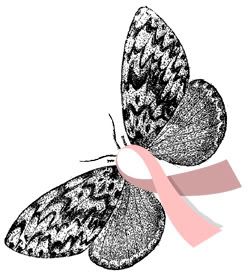The breast surgeon visited me in the waiting room to give me an update. The mastectomy procedure took longer than expected due to having a small area to work in. The surgeons were working to save the skin and nipples, plus keep the incisions as small as possible, so it took longer removing the breast tissue.
The breast surgeon also told me that they spared both nipples for now. She had told us previously that the nipple in the breast that had the multiple lumpectomies would be cored during the mastectomy. The thought behind the change was that if they cored the one nipple right away then the plastic surgeon’s future options for nipple sharing surgery would be gone if the remaining nipple’s tissue died for some reason.
They will decide if the nipple coring will be necessary after they receive the pathology report. The initial visual observation leads them to believe that the nipple coring may not be necessary. If the pathology report shows too much Atypia in the area of the nipple then the plastic surgeon will do the coring in conjunction with one of his future procedures.
Diane was struggling with the decision more and more the closer S-Day came. I mentioned that to the plastic surgeon at Diane’s pre-surgery marking and “photo shoot session”. He had already mentioned another woman’s problems due to the radiation she was given. One of her implants would need to be replaced due to damage caused by the resident radiation left over from her treatments. Since I mentioned Diane’s struggles with her decision he shared the rest of this woman’s story. She had to make a similar decision more than once and decided against the Prophylactic Mastectomies each time and she was later diagnosed with cancer.
The breast surgeon shared a second confirmation with me today that re-enforced the fact that we made the right decision. She is a member of a review board and Diane’s case was reviewed by the board. The consensus was that they would normally have reservations with the course of treatment we were pursuing if the pathology report showed only one area of concern.
The reason that the board decided that the correct course of treatment was being followed hinged on the fact that Diane’s breasts have multiple areas of concern. The ADH resides in the ductal system and the PLCIS in the breast lobules. In certain instances mastectomy can still be part of the decision tree for ADH or PLCIS on their own, but when both are present the mastectomy option moves much higher up on the tree. This confirmed my own research on the subject.
Add the family history, the density of the breast tissue (which causes difficulty in detection of any masses), the problems that the Tamoxifen was causing, and I believe there is very little doubt left in the decision that we made. The more I learned during this process, the less doubt I had. I would not have wanted us to go through all this if I wasn’t reasonably sure we were making the right decision. Little by little we are finding out that we made the only correct decision.


Leave a comment
Comments feed for this article